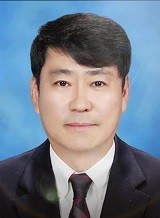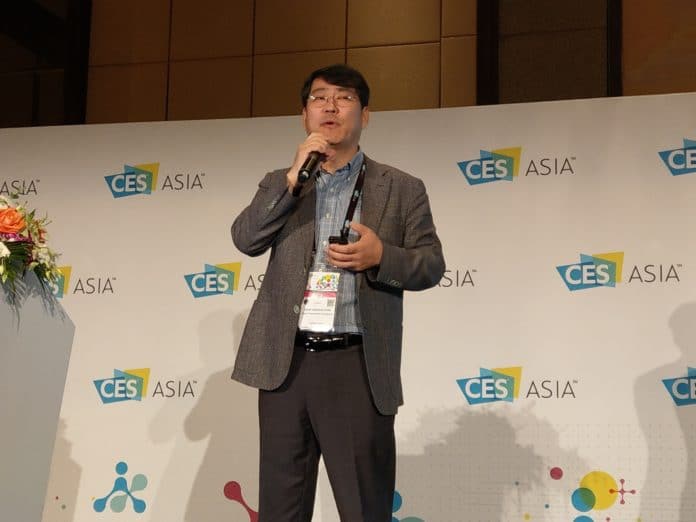The internet of things market is anticipated to grow to $141.2 billion by 2023 but the absence of IoT technology skills and uniform IoT standards restrict the growth to a large extent. To understand the global IoT Standards landscape, why standards are needed in IoT, leading companies & Standard bodies, the importance of Open Source and the purpose of OCF (Open connectivity foundation) regional forums better, Ankita KS from EFY Group had an interaction with Dr. John Park, Executive Director, Open Connectivity Foundation. Excerpts follow:

Q: How do you see the global IoT standards landscape today? Could you name a few leading companies & standard bodies globally w.r.t IoT?
A: Today, when IoT ecosystem is still being created, standard-based IoT solutions have tremendous advantages. While proprietary solutions such as Amazon Echo and Google Assistant is entering into the IoT market, things that these solutions can control are limited to contents and simple devices. On the other hand, for those companies entering into the IoT market with standard-based smart home products, chances are much greater such that it will succeed as a leading solution in IoT industry as there are various products and excessive volumes of those products that are available around the same period of time. OCF is the only IoT standard in the Smart Home space and there is no doubt that it will be the stepping stone into the success of the Smart Home IoT market.
Q: How do you see the Future of IoT and what would be the key verticals of importance be?
A: IoT will continue to expand its market and will reach a point where limited solutions survive in each vertical. At that time, IoT technology will be mature in terms of performance and compatibility. I envision that key verticals will be Smart Home, Smart Factory, and Smart City.
Q: Do you see the open source phenomenon play an important role in the IoT arena?
A: As the market grows and matures, nobody wants their solution locked in by any proprietary solution.
Q: How do you see open source improving the time to market for IoT? Could you brief with a few examples?
A: It gives an advantage because open source is created with multiple parties. Thus it covers every corner case and tends to be more complete and mature. Furthermore, open source projects are free of IPR (Intellectual Property) that it is much easier for the industry to adopt the open source-based solution.
Q: From where is the Open Connectivity Forum (OCF) driven from?
A: OCF has well, balanced members from three major continents including North America, Europe and Asia. Currently, large manufacturers in OCF are developing servers, and geographically Asia has three major manufacturers, and Europe has one. North American companies are strong in hardware, modules, and chips, but Asia also has similar potential as well. As things have to be available first before anything else, it seems that Asia and Europe will take the initial lead with smart home devices, followed by North America, and then will spread out globally.
Q: What is the need for OCF regional forums? How many OCF regional forums are formed till now?
A: Each the region has its own needs and also it can promote OCF in its own way that global OCF can’t think of. Each region has a different language, culture, and resources available. Thus, naturally OCF regional forum got initiated and now grew to three areas including Korea, China, and India.
Q: What are the initiatives taken by other regional forums like Korea and China? Could you throw light on few of their case studies and success stories?
A: Korea the regional forum took the initiatives in the following area:
- Collaboration with B2B industry. For example, HDC (Hyundai Development Company) signed an MoU with OCF to implement OCF based products in HDC’s apartment complex of 60,000 units.
- Another close collaboration with LH (Land & Housing) to use OCF solutions in their complex. LH is an organization half-owned by the government and has about 20% of all the housing market in Korea. OCF Korea is working together with LH to issue an RFP that includes OCF solution within it.
- OCF promotion in Korea. Hold OCF Korea Day, translated OCF specification in Korean, Developer Day, etc.
- Right now, OCF is working closely with Seoul City to sign an MoU between Seoul and OCF.
In China regional forum OCF conducted various initiatives. There was numerous developer conference in the last two years. Numerous joint regional conferences were also hosted between Korea and China including a demo. (Oct. 2019 in Qing Dao). The China OCF also helped to author a book about OCF implementation guide in Chinese. The team also arranged an OCF promotional event in Shanghai CES and several other IT trade shows.
Q: Could you name a few competitors globally, who are working on such initiatives?
A: When it comes to Smart Home IoT space based on standard, I do not see any competitors.
Q: Who are the main partners/members or the drivers in the foundation? Is there any company single-handedly contributing more or all are driving towards a sustainable solution?
A: There are a handful of companies contributing to OCF in various ways. Board members are obviously putting not only huge financial support, but resources across working groups. Works are well balanced among specification, open source project, and certification. All works are collaboratively carried out, not handled by one dominating company.
Q: Do you feel that various competitors are wary about OCF as it might seem Samsung is driving OCF with its agenda and might feel the foundation is majorly going to benefit Samsung?
A: I don’t think competitors have a concern about any large company and their presence such as Samsung. It is because of the intrinsic value of IoT, that is products have to be interoperable. Thus creating a larger pie with small and large competitors is better than a small pie with few players.
Q: Can you brief me about OCF certification testing and its benefits?
A: OCF certification not only guarantees interoperability but also gives the opportunity to promote OCF brand.
Q: How do you see the growth of OCF globally for the year 2020?
A: The Year 2020 will be the beginning year of OCF growth. Starting with the OCF CES promotional event, many companies are expected to follow and introduce products based on OCF and this phenomenon will have a highly likely snowball effect.











